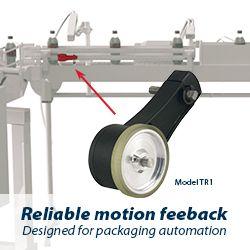Embracing Automation Technologies to Optimise Just-in-Time Processes
New ABB SWIFTI industrial cobot delivers class-leading speed, accuracy and safety
KPI INTEGRATED SOLUTIONS OPENS FIRST FULL-SCALE DEMONSTRATION SITE IN NORTH AMERICA FOR NEW GEEK+ FOUR-WAY SHUTTLE SOLUTION
MiniMACS6 Stabilizes the Furuta Pendulum
3 Benefits of Working With a Robotic Integrator
DENSO Increases Efficiencies, Improves Morale with Fleet of MiR250 Autonomous Mobile Robots
Improving Uptime and Safety with Autonomous Mobile Robots
New Ideas, Collaboration Help Brenton Drive Four Major Product Handling Upgrades to KW Container
General Purpose Programming Languages Are the Future for the Industrial Automation Industry and Are Overtaking Traditional PLC IEC 61131-3
Mouser Gives a Closer Look at Autonomous Mobile Robots in New Installment of Empowering Innovation Together
How AI is reshaping the edge computing landscape
Tazza! A 3D-Based Robot Pick-and-Place Vision System
BOWE GROUP leads an $8.2M investment round in robot software innovator MOV.AI
Maximising the Potential of AMRs with Software Integration
Omron to showcase an interactive experience that combines pick-and-place, materials transport and end-of-line palletizing at PACK EXPO 2022
Records 331 to 345 of 1240
First | Previous | Next | Last
Factory Automation - Featured Product

